Floating aids, regardless of size, need brakes no less than ground vehicles. If rafts and ferries are braked with a hook, then ships, vessels, boats, tourist and fishing rafts are anchored in the water.
For small craft, you can buy a ready-made anchor, but, in some cases, it is advisable to make it yourself. For one boat, it is good to have at least two of them - front and rear. Such locking will be more reliable and the influence of wind and waves on arbitrary the movement of the boat will be minimal.
Types of homemade PVC boat anchors
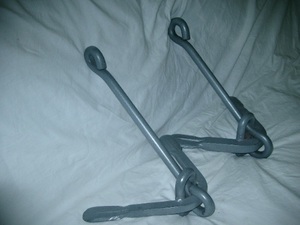 Knowing that there are about two thousand varieties of these products, do not study all of them in detail. It is enough to know that not so many designs are popular. Here's a quick overview:
Knowing that there are about two thousand varieties of these products, do not study all of them in detail. It is enough to know that not so many designs are popular. Here's a quick overview:
The most important thing is not to miss a bite!
You can get into a "fishy" place, but not catch anything. Now there are special self-locking rods with a special mechanism:
- At the time of the bite, the line is pulled, which leads to the operation of the undercutter.
- The fish, hooked at the right time, remains on the hook, and you just have to get it out of the reservoir!
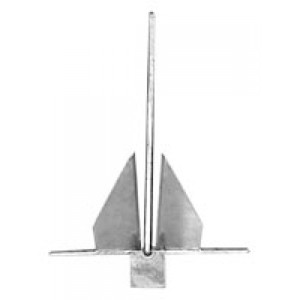
2. Mushroom anchors, anchor devices various original and non-standard designs. As a rule, they are suitable for small single boats, since they have a low holding force and do not cling to the ground. But such devices are extremely easy to manufacture and do not require expensive materials.
- Stone with a hole for fastening the rope
- Plastic bottle cut-off... A cement mortar is poured inside and an anchor is inserted (it can be made of aluminum wire) to fasten the rope. The edges of the bottle are wrapped with a hairdryer so that the cement monolith does not come out of the bottle. However, the loss of the plastic shell is not critical, the device will still work.
- Old dumbbells, cast iron irons, rails, etc. These anchors are heavy and not very convenient, it is difficult to transport them in a backpack, keep them on rubber boat Rounded anchors do not cling well to the bottom soil and can slide on it.
Weight
Required anchor mass can be defined in several ways:
- According to the tables. These tables can be found in specialist literature (library books or topical magazine binder), but more readily available source of such information is definitely the internet.
- According to the empirical formula. The displacement of the boat, expressed in tons, is squared. The cube root is extracted from the result, the resulting number is multiplied by eight. The end result shows the required weight in kg.
- By the length and weight of the boat. The corresponding value, expressed in kg or cm, is divided by one hundred. The resulting value will be the weight in kg. For example, for a boat weighing 500 kg with a load, an anchor of 5 kg is required. If the boat is 250 cm long, then it will need an anchor weighing 2.5 kg.
Rope selection
Material and type
Inflatable boat chains are contraindicated. Categorically! Ropes from natural materials(for example, hemp or jute), most likely, will not be found on sale or in sheds of even the most zealous owners. Therefore, you will have to choose among synthetic products.
The tensile strength of the material is determined under a force 70 times the mass of the armature. The rope should be twisted from fibers with a diameter of at least 10 mm in order to avoid squeezing the hands when handling the anchor.
Rope length
 This indicator depends on the strength of the wind and assumes knowledge of the depths of the reservoir where the boat will be used.
This indicator depends on the strength of the wind and assumes knowledge of the depths of the reservoir where the boat will be used.
- If the length of the anchor is equal to three times the depth of the reservoir, then, perhaps, sailing with a wind force of up to 3-x points.
- If the wind blows with a force of 6 points, then a rope with a length of 5 depths of the reservoir is required.
- With a wind force of 9 points, you should take care of the anchor line with a length of 7 depths.
- If a strong current is expected, then the length of the rope should be increased additionally, the margin will not be superfluous!
Homemade PVC boat anchors, examples of manufacturing
So, the reservoir, weather conditions and features of the upcoming fishing are determined, the nature of the bottom is known. The type of anchor has been determined, the design has been developed (it is best to get or make a drawing yourself, you can download it from the Internet), the mass has been calculated and the appropriate rope has been selected. You can start making. In addition to cutting metal with a grinder and drilling, plasma cutting may be required. The overwhelming majority of technologies also require a welding machine.
Cat anchor
 An excellent option for use with PVC boats 3-4 m long in calm weather. The folding legs are attached to a sleeve sliding along the central rod. Before carrying the anchor, the legs must be locked at the bottom. The working position of the paws is fixed at the top with cotter pins. These cotter pins are easy to cut when you need to remove a stuck anchor.
An excellent option for use with PVC boats 3-4 m long in calm weather. The folding legs are attached to a sleeve sliding along the central rod. Before carrying the anchor, the legs must be locked at the bottom. The working position of the paws is fixed at the top with cotter pins. These cotter pins are easy to cut when you need to remove a stuck anchor.
If windy weather is expected, the structure needs to be weighted. And, sometimes, in a very significant way!
Materials for making:
- A metal pipe (can be a bar) with a diameter of 30 mm, length within 20 ... 30 cm and, additionally, a piece of pipe slightly larger in diameter, 2 ... 3 cm long. A short pipe should be coaxially put on a long pipe and be able to move freely along the axis ...
- Mounting rings, 2 pcs.
- Metal sheets with a thickness of 4 ... 6 mm, from which the following blanks should be made:
- strips 10 ... 15 cm x2 cm, 4 pcs .;
- strips 4 ... 5 cm x 2 cm, 4 pcs., round off the edges.
- strips 3 cm x 2 cm, 8 pcs., round off from one end.
- paws in the form of a pointed triangle, 4 pcs.
Manufacturing technology:
- 4 out of 8 strips 2x3 cm in size are drilled (one hole with a diameter of 5 ... 7 mm is made). The same holes are drilled in medium and long strips, and 2 holes must be made in the middle ones along the edges.
- 2x3 cm strips with holes are welded to a long pipe and will serve as brackets for attaching the legs.
- The remaining 4 strips 2x3 cm welded to short pipe.
- Long strips are narrowed on the grindstone, then triangles are welded to them. An incision is made in the middle of the strips, the workpiece is folded over and welded. This is how 4 horns are made.
- A short pipe is put on a long one, welded strips on both pipes are connected in pairs by earrings (strips 4 ... 5x2 cm) using rods.
The product is ready!
Pyramidal anchor
There are two ways:
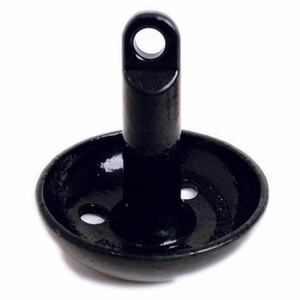
Materials:
- Metal rod. Length 12 mm.
- Metallic stripes. The thickness of the rolled products is 3 mm.
- Wire. Diameter no more than 8 mm.
Technology:
- A spindle is made of wire.
- On top of the spindle, strips are welded (or tied), which serve to unfold the paw and ensure normal adhesion to the bottom.
- A strip of metal is welded to the ends of the spindle. Its function is to keep the paws in working position.
The disadvantage of this type is that the structure is not separable, which complicates transportation and increases the risk of damage to the boat.
Do-it-yourself collapsible anchor
Materials:
- Lead * up to 2 kg.
- Metal rings, 2 pcs.
- Steel tube, diameter 25mm and length 270mm.
- Sleeve 25 mm.
- Nut М12.
- Metal strips ** 4 mm thick.
 * Lead can be dispensed with if the mass of the armature (1.6 kg in the example shown) is sufficient to securely hold the boat. Otherwise, lead serves to make the armature heavier.
* Lead can be dispensed with if the mass of the armature (1.6 kg in the example shown) is sufficient to securely hold the boat. Otherwise, lead serves to make the armature heavier.
** Strips 260x40 mm in size will need 2 pcs., You will also need smaller strips, the quantity is also 2 pcs.
Technology:
- a hole is drilled at one end of the tube;
- a sleeve is welded to the other end of the tube;
- the edges of the larger metal strips, which are the workpieces of the paws, are processed with sandpaper;
- two smaller plates are welded to one of the paw strips, they will prevent the anchor from spinning;
- paws are put on the tube;
- the nut is closed;
- the rings are welded to the nut and to the hole on the pipe (stem).
The rings are used to provide convenience when assembling the anchor and when lifting it from the ground.
If a weighting of the structure is required, then lead can be poured into the pipe.
Conclusion
It is not easy to find an anchor in a store that meets all the requirements and wishes of a fisherman or a tourist. And the price of such a product is high. In fact, there is no guarantee of the high quality of the purchased goods.
Therefore, making an anchor for a PVC boat with your own hands means that it is optimal to solve these problems.
And one last tip: homemade PVC boat anchors should be equipped with buoys. They can be made from a piece of Styrofoam.
How to increase your fish catch?
Today there are many ways to increase your catch. One of the interesting options is a bite activator. It attracts fish from long distances and stimulates their appetite with the help of pheromones, which are part of and affect the behavior of individuals. Pheromones are natural biologically active substances that are secreted by living organisms, including fish.
Does it really all work? How not to buy a pig in a poke? Read the details in our review.
Attention, only TODAY!
Without a doubt, an anchor for any floating craft is a fairly important element. An anchor is one of the main components of any boat. Quite often it happens that people who love fishing and everything connected with it do not use an anchor at all, but some kind of load.
This cargo, as a rule, must be suitable in terms of weight category, as well as in size and mode of action. But it is worth noting that such material is extremely uncomfortable to use. Moreover, such a load may not be reliable yet. Based on this, we can say that it is best to produce or purchase a normal anchor that will meet all international standards.
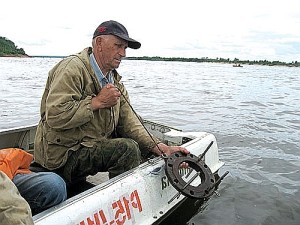 Unfortunately, there are currently no anchors in stores that can fully cover the expectations of the fishermen. Hence from this, every self-respecting fisherman seeks to independently produce an anchor. First of all, to build an anchor, you need to know the conditions where it will be applied. It is very important to know the information about the soil. Without a doubt, making an anchor directly with your own hands is very easy, and most importantly, simple, especially if you use literature from the Internet.
Unfortunately, there are currently no anchors in stores that can fully cover the expectations of the fishermen. Hence from this, every self-respecting fisherman seeks to independently produce an anchor. First of all, to build an anchor, you need to know the conditions where it will be applied. It is very important to know the information about the soil. Without a doubt, making an anchor directly with your own hands is very easy, and most importantly, simple, especially if you use literature from the Internet.
What do you need to know and remember before building an anchor?
First of all, you need to know that the weight of that very anchor should be one tenth of the weight of the boat itself on which it will be used. This factor contributes to the fact that the boat will be held in a more stable and quality position. Moreover, it is necessary to pay and pay a lot of attention to the cable that will be attached to the boat and hold the same anchor.
Experts advise that this the rope was made from synthetic yarn... This is justified by the fact that it is of higher quality and will last much longer. The length of this rope depends on the ability of the anchor. That is, how well he can keep the boat in one position.
It is necessary to take into account the factors of strong winds and the like. If you have this information, you can make a high-level anchor, and most importantly high-quality, very easily and in a short time.
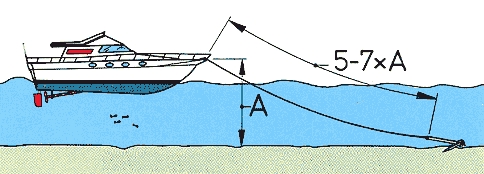
Inflatable boat anchor
As a rule, an anchor of this type is produced simply. For inflatable boats, the anchor, which is produced from the frying pan... Its diameter is 30 centimeters. This is not a joke, just from the frying pan. It is necessary to drill a hole, which is necessary for a spindle with a specific thread.

On the other side of this spindle, a so-called eyelet is made, which is necessary for the rope. Next, a special nut is put on this thread, and only then a flat, round-shaped weight of lead. Its weight should be approximately one kilogram. Only then it is necessary to put on this frying pan, it will have to be clamped with a washer at the expense of one more nut.
This anchor does not contain sharp corners or other similar elements. Due to this, the reality of damaging the inflatable boat is quite minimal.
But it is also necessary to say that such an anchor can hold it well. Moreover, such anchors are easily improved and take on a different shape.  This can be done by cutting several direct sections in the pan. Further, the sharp edges are very easily rounded.
This can be done by cutting several direct sections in the pan. Further, the sharp edges are very easily rounded.
Also, a fairly good anchor is in the form of a pyramid, it is made from a material such as lead... In this pyramid there is a special loop made of special wire. If the length of the side of such a pyramid is about 10 centimeters, then its direct weight will be three and a half kilograms. It is such an anchor that can hold an inflatable boat even in high currents and in high winds.
Welded anchor
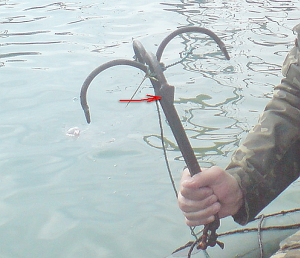 The most common anchor of this type is an anchor called " Cat". In principle, its essence and principle becomes clear from the name. He has four so-called legs.
The most common anchor of this type is an anchor called " Cat". In principle, its essence and principle becomes clear from the name. He has four so-called legs.
Such an anchor can be made from ordinary fittings. On the so-called legs of this anchor, special plates of a certain shape are welded in order to better hold. If you do not use such plates, then the anchor will be extremely difficult to keep the boat on the ground. Especially if there is nothing to grab onto at all. Also, experts recommend using an additional load.
It must be remembered that you can make an anchor with just two straight legs. But in such a case, it will be necessary to weld a special pin in the center of the anchor itself. With the help of it, the anchor will be able to position correctly at the bottom. But, and if it is not there, those two paws will not be able to do anything. They will just slide along the bottom. Experts call such anchors admiralty.

It must be remembered and understood that in order to make an anchor with your own hands, you do not need a lot of effort and objects. Materials for the construction of absolutely any anchor will require a minimum amount.
Many fishermen make not only various weights, floats and lures, but also make solid anchors for inflatable boats. Without a doubt, this is much better, because, firstly, you save money, and secondly, you will be confident in the reliability of the device.
Inflatable boat anchors are made in a variety of ways. The most popular manufacturing method is the so-called Kurbatovsky, which involves the creation of a welded structure. If you have the necessary materials and tools, you will have at your disposal a simple, compact, lightweight anchor.
Requirements for a homemade anchor
The main requirement for an anchor is its ability to hold the vessel under conditions of waves, wind and currents. The holding force depends on the mass of the anchor.
To determine the required mass, it is better to use special tables or carry out calculations using formulas, although you can be guided by standard rules. For example, anchors weighing 5-6 kg are capable of holding boats with a displacement of 450-550 kg.
In general, the weight of the anchor is approximately 1% of the weight and 1% of the length of the watercraft. But besides the characteristics of the boat it is also necessary to take into account the strength of the wind and current, the presence of waves.
The type of bottom soil is also an important point, as some anchors are not suitable for all underwater soil.
Making a simple collapsible anchor
To make a homemade collapsible anchor, you will need n small stainless steel tube: diameter - 25 mm, length - 270 mm. We weld a sleeve with a 25-mm M12 thread to its end.
Paws are made from p stainless steel strip with the following dimensions: length - 260 mm, width - 40 mm, thickness - 4 mm. The edges of the paws must be sanded with sandpaper.
On one of the paws two strips are welded in order to prevent the paws from rolling in the assembled position of the anchor. We put the paws on the stock and tighten them with an M12 nut. In order for the anchor to be assembled without the use of tools, we weld a ring onto the nut. On the other side of the armature, a hole is made into which another ring is inserted (diameter - 40 mm, wire thickness - 5 mm). Such an anchor will weigh 1.6 kg.
To increase the stability of the boat in strong wind conditions, you can use the anchor rod pour about 2 kg of lead.
Such a collapsible anchor is attached to the seat using a special cord with a carabiner. The ring that has been welded to the nut can be used to secure the cord when parked on a rocky bottom with driftwood. When the cord is hooked to the anchor by the lower ring, the process of pulling the anchor will become easier.
To make an anchor of this type, you need:
- a piece of a metal rod with a length of 12 mm;
- sheet part (thickness 3 mm);
- wire (diameter not less than 8 mm).

The anchor will have a forked spindle and one leg. Approximate weight - 2 kg.
First, we make a spindle of wire, to the top of which we weld a bar. Next, we tie the fixing strips to the stem. Thanks to them, the paw will unfold, and a reliable grip on the bottom soil is provided. The ends of the spindle at the stem should be welded with a strip of metal, which is necessary to maintain the single paw in the working position.
For PVC boats with a length of 3-4 m, an excellent solution would be to use a cat anchor. The easiest way is to make a folding version, the design of which provides for the fastening of the paws with the help of hinges at the bottom of the anchor base. The position of the anchor paws is changed using a special clutch that slides along the spindle and stops in the upper or lower position.
 To avoid a breakage, we fix the paws on the rod with cotter pins, which are cut off in case of a jammed structure, allowing the paws to straighten and get out from under the driftwood or other blocking object. The compactness can be increased by pivoting the feet at the bottom of the stem, on which the floating sleeve is put on. This way you can easily fold the tines and bring them back into working position.
To avoid a breakage, we fix the paws on the rod with cotter pins, which are cut off in case of a jammed structure, allowing the paws to straighten and get out from under the driftwood or other blocking object. The compactness can be increased by pivoting the feet at the bottom of the stem, on which the floating sleeve is put on. This way you can easily fold the tines and bring them back into working position.
This cat anchor is especially good in calm weather. In case of strong gusts of wind, the anchor should be additionally weighted.
PVC inflatable boat is the most common small boat used by tourists, hunters and fishermen. Many people ask themselves the question: how to choose an anchor for an inflatable PVC boat? We will deal with this issue in this article.
Let's start with history... Since the emergence of the fleet as such, the design and shape of anchors have been regularly improved. To date, the well-known and patented devices that serve to hold the boat in place during the stay away from the coast and near the unequipped coast, there are only about 2 thousand species. The photo shows the main recognized types of anchors.
To anchor there is one basic requirement - reliable anchoring of the boat in place in waves, wind or current. Therefore the holding power is his main characteristic, and among its main parameters, of course, is the mass of the armature. You can calculate the weight of an anchor using a special form, but it is quite complex, so it is easier to determine it using tables. As a result, the following picture will turn out: a ship with a displacement of 500 kg needs a 5-6 kg anchor, with a displacement of 250 kg - 2.5-3 kg, and so on.
That is the calculations must be based on one of the following rules:
- the weight of the anchor should be approximately 10% of the weight of the vessel;
- anchor weight is equal to 1% of the length of the vessel (1% of 280 will be 2.8kg)
Not only the type of anchor is determined by the design of the boat. Swimming conditions, the presence of currents, waves, wind, the type of bottom soil are also of great importance. For example, the Admiralty anchor can be used in any type of soil, but when compared with other models, it has a lower holding force. Danforth's anchor, which has impressive dimensions, has increased holding power. Roughly the same can be said about Bruce's anchor (plow) and Hall's anchor. This begs the question, which anchor to choose?
If you summarize all the information generously shared by the global network and print media, it is still possible to determine the most suitable anchor for a PVC boat. The foldable cat anchor is most commonly used on these inflatable craft, but it does not fall into the "recognized" category. Its design has a number of features that provide compact transport dimensions and exclude the possibility of damage to the PVC boat hull in the stowed position. Almost every PVC boat shop offers such an anchor: weighing 1.5-12 kg with the possibility of increasing the mass by 0.5 kg. You can use such an anchor in any bottom soil.
but so that the pleasure of fishing or a boat trip does not turn into a high-budget event, the set anchor is not enough, it still needs to be etched, which is especially important in areas of the bottom with snags. Therefore, there is another type of cat anchor, however, it cannot be bought in a PVC boat store, as it is the brainchild of experienced fishermen who make it with their own hands. The design feature of the anchor - horns made of reinforcement or wire (3-4 mm thick), which unbend under conditions of increased load.
Material it is used so that the paws do not bend easily, and their number can be 4 or more. Also in the literature there are several more types of lightweight and simple anchors, the use of which is most convenient for inflatable boats. This is a hoop anchor, a bell, an umbrella. Of course, boat owners instead of anchors use bags of pebbles or sand, tied with bricks or stones with a strong rope. But, as they say, the owner is a master. We will not consider such options in detail.
We pass to the anchor rope, the choice of which the owner of the inflatable watercraft will face sooner or later. Hemp, sisal and others (natural) or nylon, nylon and other synthetics can be used as a starting material for such a rope.
But natural materials inferior to synthetic ones in strength, resistance to decay, exposure to water and the sun, so we will stop with them. The main characteristics influencing the choice of the anchor rope are tensile strength, thickness. The breaking force that the cable should have should be 70 times the mass of the anchor. That is, an anchor cable with a thickness of 7-10mm and having a breaking force of more than 1000kg will be more than sufficient.
Concerning the length of the cable, then for inflatable PVC boats, it should be at least 4-6 times the depth of the intended sailing place. However, it is better that the cable be with a margin of length, since there may be a strong current in the area of the proposed fishing or walking, and you should also not discount the strong wind. That is, with an increase in the length of the cable, the holding force of the anchor also increases.
How to lock the cable on inflatable boats? Better for the eye-ring or eye-handle, and not for the handrail. The anchor rope is attached to the vessel as low as possible to the stem.
What to do so as not to lose the anchor when it is firmly stuck in the bottom soil? A few recommendations:
- One an effective method is to tie an additional cable (buirep) with a fixed piece of foam at the end to the trend (the place where the horns are attached). It will show the place where the anchor is hooked. If you have difficulty lifting it by the main cable, you can lift it by the spindle, or by the trend, using an additional cable.
- Exists another way, but it is for inventive and experienced anglers and hunters. The cable must be passed through a cotter ring (made of fishing line, wire and other things that can withstand a breaking load of 15-20 kg) fixed in the spindle ear. This snaps the end of the cable to the trend of the anchor. With a sharp jerk in the direction opposite to the location of the anchor, the check breaks and the anchor rises behind the trend.
The gravity version includes simple and very practical anchors. For example, cast iron discs, stones, tied bricks, bags of silt, pancakes from a bar, homemade lead options, tracks from a tank or tractor. Such anchors lie flat on the bottom and perfectly keep the boat on the water. The disadvantage of such options is their bulkiness and heavy weight.
The floating option is also called a parachute. This name is fully consistent with its design. This option is great for bodies of water without flow. The parachute holds the boat securely even in strong winds. For the manufacture of this parachute, high-quality polyethylene or fabric is used. The design of the parachute anchor is very simple. The diameter of the parachute and the length of the lines are 1.5 meters. This product is attached to a rope 10 meters long. In the center of the parachute circle it is necessary to make a hole with a diameter of 10 cm for water to escape.
The clinging options are based on the presence of paws that cling more reliably to the bottom of the river. Paws in such anchors can be very diverse - from thin wire to wide flat. As a rule, such products are endowed with various hinge assemblies with moving parts. The use of this type of anchor makes it possible to reduce its weight and use its compact modifications.
Anchor Cat
The most popular cling type anchor is the cat anchor. Many anglers tweak the cat to make it more versatile. In particular, you can reduce the snagging by tying a rope to it from the side of the paws. In order for the sharp paws not to injure the PVC, they can be rounded off. Usually the cat anchor has a collapsible design, which is very convenient, especially when used with a PVC boat.
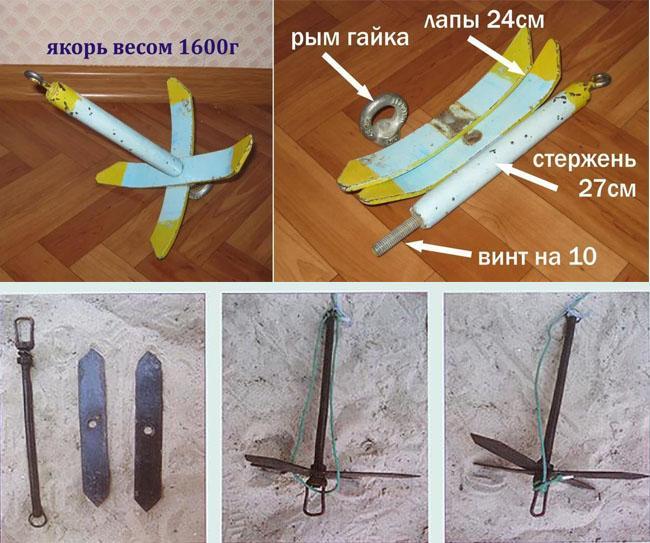
You can make an anchor that will be an analogue of a cat yourself. To do this, you will need the following components:
- a piece of pipe with a diameter of 2.5 cm and a length of 30 cm;
- two metal plates up to 30 cm long and up to 10 cm wide;
- nut and two rings
- lead.
Components and the whole assembly are shown in the photo. For safety reasons, it is better to round the corners. If necessary, the legs can be bent. Lead is required to be poured into the pipe. Thus, the manufactured anchor can be unloaded to the required weight. Such a product is convenient for searching for sunken objects.
Hall anchor and Denford's anchor
One of the most popular and well-known options in shipping is the Hall anchor. As a rule, the details of this model are cast from cast iron, and have a hinge structure. The holding force of such a product is 3-4 times its mass, therefore this model is used even for boats.
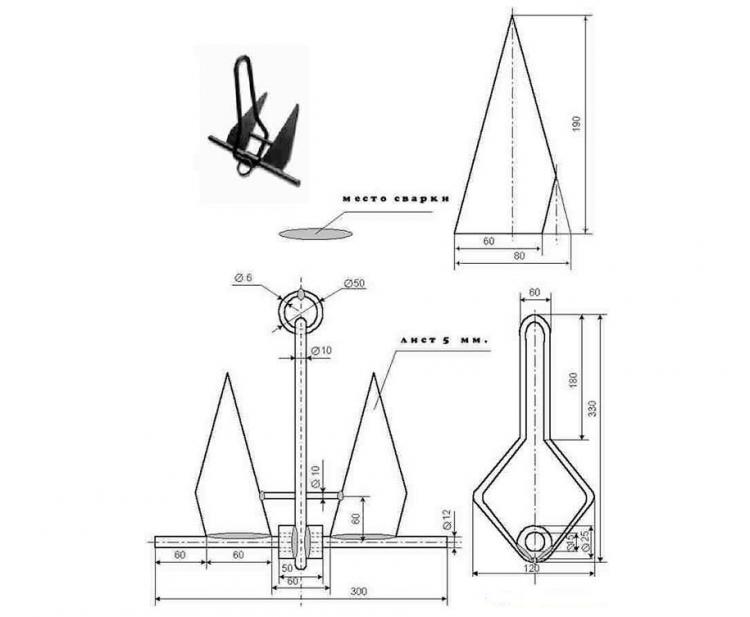
More modern and easier to craft is the Denforth anchor, which looks a bit like the Hall anchor. An analogue of such an anchor, which is suitable for inflatable boats, can be made by yourself. The picture shows a homemade analogue of the Denford anchor.
Despite its great popularity, such an anchor is not very practical. The plane of its contact with the bottom is not very large and on strong current such a product can carry. Therefore, this option is applicable when used on the bottom with soft ground, where it will have the ability to bury.
Mushroom anchor
One of the best options for fishing on the current is the mushroom anchor. This version of the anchor provides the best adhesion to the bottom soil due to the mushroom cap, which buries into the ground when the rope is pulled. Usually such anchors are cast entirely.
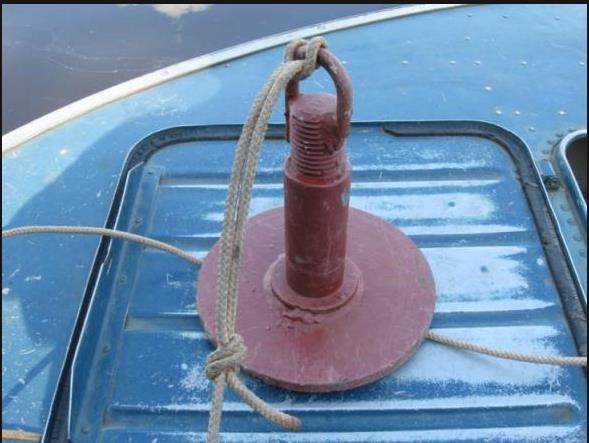
At home, a semblance of a mushroom anchor can be poured out of lead. Another possible option is a homemade frying pan product. A do-it-yourself frying pan anchor is an excellent home-made option that is the best fit for a PVC boat. It is made very simply:
- a thread is cut on one side of a steel rod with a diameter of 1-2 cm;
- a hole is drilled on the other side for threading the rope;
- a hole is drilled in the center of the pan for this rod;
- the rod is screwed to the pan with a nut.
The greatest restraining effect can be achieved when using an anchor of such a plan - the stronger the current, the more it burrows into the ground.
Anchor Kurbatov
One of the possible anchor options that can be used with a PVC boat is the Kurbatov option. This option has good grip on the bottom. This option consists of a wire bifurcated body and a moving arm, which rotates freely and takes any position it needs. All dimensions of the Kurbatov anchor are shown in the diagram.

A variation of the Kurbatov model is the Trident model. This option is very popular abroad. This version differs from Kurbatov's model in the shape of a shovel, which in the foreign version has the shape of a trident. Both of these anchors are great for soft and loose soil such as silt or sand.
Whichever anchor is chosen for the boat PVC mount it must be reliable. In case of strong winds or currents, the anchor must be fitted on the boat in two places - at the stern and at the bow. In this case, the boat is installed along the stream.
Fishing from a boat is sometimes necessary in a wide variety of conditions. Sometimes it is advisable to use a buoy to locate the anchor. With the help of a buoy rope, the buoy is connected to the lower part of the product. The need to use such a safety net may arise near a dense snag. When the anchor is hooked, it can be pulled out using the buoype cable.
Homemade PVC boat anchor is a compromise option for the angler, as first of all money is saved that can be spent on other fishing accessories. In addition, the anchor can be made of materials at hand, have the required weight, and have a folding mechanism. To date, there are a lot of drawings for making an anchor for a PVC boat with your own hands. Moreover, any, even the most demanding, angler will be able to choose the best option for himself. Therefore, most often the anchor is made by anglers on their own, and this is absolutely the right decision.


